In the vast tapestry of Norse mythology, Nanna stands as a figure of grace and serenity. Often overshadowed by the more boisterous gods and goddesses, her story is one of love, loss, and the enduring spirit of the human heart.
Nanna Key Facts
| Parents | Nepr, mother unknown. |
| Partners | Balder |
| Siblings | None known |
| Offspring | Forseti |
| Tribe | Aesir |
| Old Norse name | Nanna |
| Other names | None |
| The God of | Grief, Consolation |
| Ass. Animal | None |
Name and Etymology
In the intricate world of Norse mythology, Nanna is often referred to by her full name, Nanna Nepsdóttir. The patronymic “Nepsdóttir” directly translates to “daughter of Nep,” signifying her lineage and emphasizing her connection to her father, Nepr.
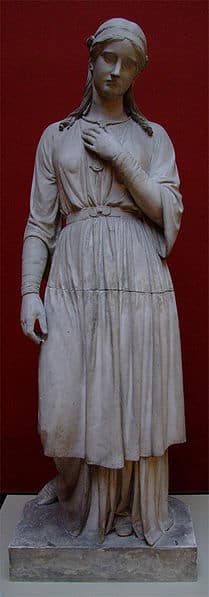
Nepr, sometimes anglicized as Nep, is mentioned in Snorri Sturluson’s “Gylfaginning” as the father of Nanna. Furthermore, he’s listed among the sons of Odin in the þulur, suggesting a direct link between Nanna and the chief god, Odin. I want to stress that nothing else is known about Nepr though. One thing we do know is that there are poems, detailing myths of people and events that have been lost. Maybe Nepr was better known in other myths, or he could always have been a peripheral character. Part of this dynamic of the unknown in Norse mythology is what makes it so interesting to me personally.
The etymology of Nanna’s name has been a subject of scholarly debate. Some believe that the name might originate from a babble word, “nanna,” which means “mother.” This interpretation is particularly intriguing, considering Nanna’s nurturing qualities and her role as a comforting figure in the pantheon. However, it’s essential to note that while the meaning of her name might hint at motherhood, her primary identity in the myths revolves around her deep love for Baldurand her role as the goddess of grief and consolation.
Ancient Roots
While Nanna might not be as prominent as some other figures in Norse mythology, the origins of her name offer a fascinating glimpse into ancient religious connections. Intriguingly, the name “Nanna” can be traced back to the Sumerian god of the moon. In later Mesopotamian religious texts, this deity is referred to as Sin or Suen. This connection suggests that while Nanna’s stories and attributes are distinctively Norse, the roots of her name might have ancient Mesopotamian influences. Such cross-cultural links highlight the interconnectedness of ancient civilizations and their mythologies.
Nanna’s Origins
Within the rich tapestry of Norse mythology, Nanna’s lineage stands out due to its partial clarity and partial mystery. She is recognized as the daughter of Nepr, as her patronymic name, Nanna Nepsdóttir, suggests. This name translates directly to “daughter of Nep,” firmly establishing her connection to Nepr. While Nepr’s mention in the þulur as one of the sons of Odin provides a glimpse into his identity, he remains an enigmatic figure in the Norse pantheon, with little else known about him.
The identity of Nanna’s mother, on the other hand, remains entirely unknown. This absence of information about her maternal lineage adds an element of intrigue to Nanna’s background.
Despite these gaps in her family history, Nanna’s story truly begins to shine when her life becomes intertwined with Balder, the god of light and purity. Their profound love story, marked by deep affection and heart-wrenching tragedy, is a testament to Nanna’s significance in Norse tales.
Nanna’s Family and Relationships
Nanna’s life was deeply intertwined with that of Balder, the beloved god of light. Their love story is one of the most touching tales in Norse mythology. She is not known to have any other love interests in her life.
Balder
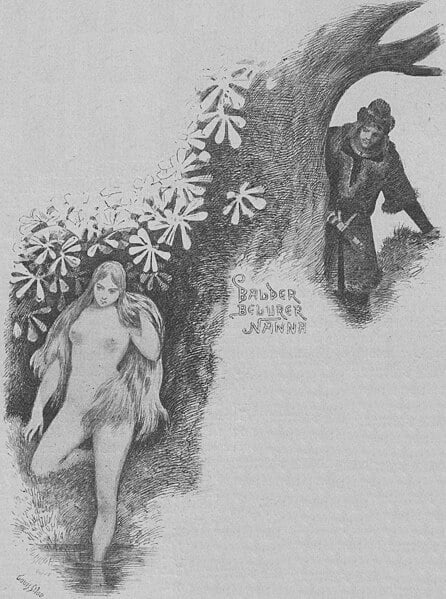
Nanna and Balder’s relationship was the epitome of true love. Their bond was so profound that even in death, they remained inseparable. When Baldurwas killed, Nanna’s grief was so immense that she died of a broken heart, joining him in the afterlife.
Children
Forseti, the god of justice and reconciliation, was the offspring of Nanna and Balder. He inherited his mother’s calm demeanor and his father’s sense of righteousness, making him a respected figure among both gods and mortals.
Nanna’s Role And Depiction
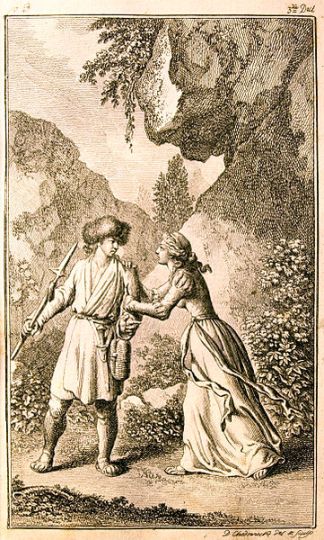
Nanna was primarily associated with grief and consolation. While she wasn’t as active in the affairs of gods and humans as some other deities, her presence was a source of comfort during times of sorrow. Among the gods, she was a beacon of empathy and understanding. For humans, she served as a reminder that even in the darkest times, there’s a glimmer of hope and solace.
Play Fun Norse Quiz
Is this article making you even more curious about Norse gods and goddesses? You can satisfy your curiosity by playing a fun Norse mythology quiz. This way, you can test your knowledge about Norse gods and goddesses, as well as fill in some gaps. Good luck and have fun playing!
Don’t forget to try our other games as well!
Myths about Nanna
Nanna’s narrative in Norse mythology is deeply interwoven with the tragic tale of Balder’s death, a story that resonates with themes of love, loss, and hope. Balder, the beloved god of light, began to have troubling dreams of his own death. Disturbed by these visions, his mother, Frigg, extracted promises from every object in the world not to harm her son. However, she overlooked the mistletoe, deeming it too young and harmless.
Loki, the trickster god, discovered this oversight and fashioned an arrow from mistletoe. He then manipulated the blind god Hodr into shooting this arrow at Balder, leading to Balder’s untimely death. The realms mourned the loss of the radiant god. However, no one felt the pain more acutely than Nanna. Overwhelmed with sorrow during Balder’s funeral, she died of a broken heart. In a poignant display of their inseparable bond, Nanna was laid down beside Balduron his ship, Hringhorni, which served as both his funeral pyre and ship burial.
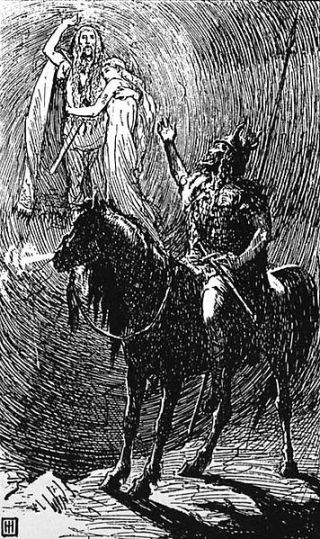
Hermod’s journey to hel
Hermod, another of Odin’s sons, embarked on a perilous journey to Hel, to retrieve Balder. He was unsuccessful in convincing Hel, to release him. However, Hermod was given gifts from both Baldurand Nanna to bring back to the realm of the living. Baldur gave him the ring Draupnir to return to Odin. Nanna’s gifts were heartfelt tokens of remembrance: a linen robe for Frigg, a golden ring for the goddess Fulla, and other items that held sentimental value.
The tale concludes with a glimmer of hope. While it is foretold that Baldurwill be resurrected after Ragnarok, the great cataclysmic event in Norse mythology, there is no direct mention of Nanna’s return. However, given the depth of their bond and her unwavering love, one can only hope that she will be by Balder’s side once again.
Mentions in Ancient Texts
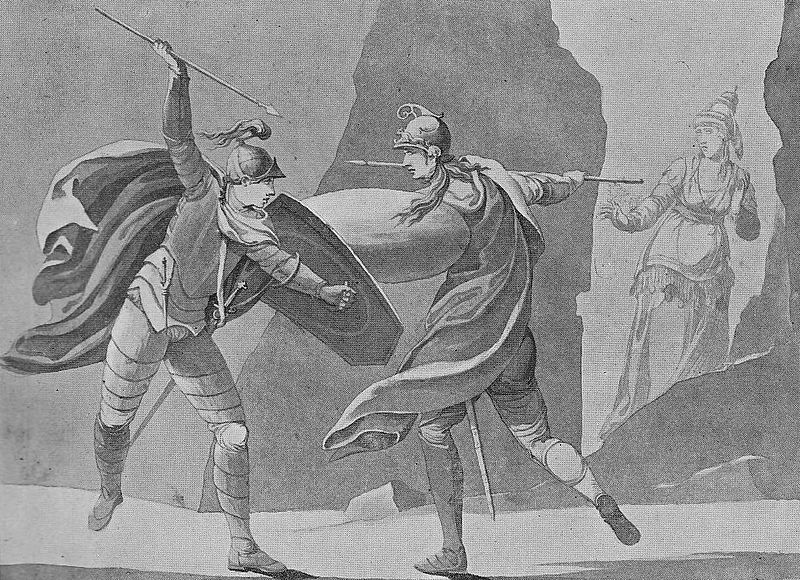
The narrative of Nanna, as we understand it today, is primarily rooted in Snorri Sturluson’s “Prose Edda.” This seminal work offers the most comprehensive and detailed account of her life, relationships, and tragic end. While Nanna is mentioned in other sources, they are sparse in comparison, and much of what we know about this gentle Norse goddess is derived from Sturluson’s writings. The following sections delve into the mentions of Nanna in both the “Prose Edda” and other ancient texts, providing insights into her portrayal and significance in Norse mythology.
Poetic Edda
Hyndluljóð
In the Poetic Edda poem “Hyndluljóð,” a figure named Nanna is identified as the daughter of Nökkvi and as a relative of Óttar. It remains a topic of debate whether this Nanna is the same as Baldr’s wife or a different figure altogether.
Prose Edda
Gylfaginning (Chapter 38)
“High” reveals that Nanna Nepsdóttir (with “Nepsdóttir” meaning “Nepr’s daughter”) and her spouse Baldr bore a son named Forseti, the god of justice.
Gylfaginning (Chapter 49)
This chapter recounts the tragic death of Baldr in Asgard, caused unintentionally by his blind brother, Höðr. As Baldr’s body is taken to the coast, Nanna, overwhelmed by sorrow, collapses and dies. Both their bodies are placed on the ship Hringhorni, set aflame, and Thor sanctifies the pyre with his hammer, Mjölnir.
Later, Hermóðr, on Frigg’s behest, ventures to Hel to resurrect Baldr. He discovers Baldr and Nanna seated in a hall of honor. After negotiating with the goddess Hel, both Baldr and Nanna accompany Hermóðr out. Baldr hands over the ring Draupnir to Hermóðr for Odin, while Nanna bestows gifts: a linen robe for Frigg, a golden ring for Fulla, and other items. Hermóðr then returns to Asgard.
Skáldskaparmál
In the initial chapter, Nanna is among the eight goddesses attending a feast for Ægir. Subsequent chapters provide various means of referring to Baldr and Frigg in relation to Nanna. For instance, Baldr is termed “husband of Nanna,” and Frigg as “mother-in-law of Nanna.” Nanna is also listed among other goddesses. Additionally, a kenning in Eilífr Goðrúnarson’s “Þórsdrápa” references Nanna as “wake-hilt-Nanna” for “troll-wife.”
Gesta Danorum
In the “Gesta Danorum,” Nanna’s portrayal diverges significantly from Norse mythology. Here, she isn’t a goddess but a mortal, the daughter of King Gevar. Nanna harbors feelings for her foster-brother Höðr, a human. However, upon witnessing Nanna bathing, Baldr, described as Odin’s son, becomes infatuated with her. His desire for Nanna and his apprehension of Höðr as a potential obstacle lead him to contemplate murdering Höðr. This narrative starkly contrasts with the divine and serene portrayal of Nanna and Baldr in Norse myths.
Frequently Asked Questions
Nanna is best known as the goddess of grief and consolation and for her deep love for Balder.
Forseti, the god of justice and reconciliation, was Nanna and Balder’s son.
While not associated with specific artifacts, Nanna was symbolized by the moon.
Nanna died of grief after the death of her beloved Balder.
During Ragnarok, Nanna was resurrected alongside Balder, symbolizing hope and rebirth.
Nanna is referenced in both the “Prose Edda” and the “Poetic Edda.”
Featured Image Credit: Friedrich Wilhelm Heine (1845-1921)., Public domain, via Wikimedia Commons
